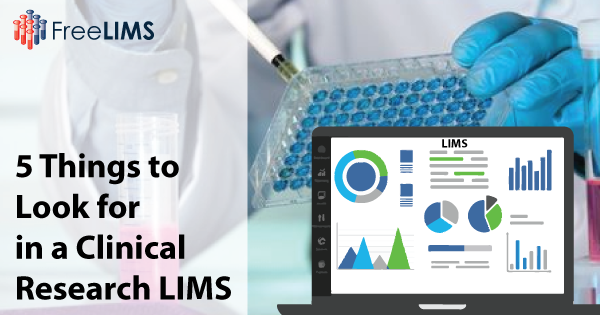In the dynamic world of clinical research, where breakthroughs hold the key to advancing medical knowledge, time is a precious resource and effectively managing it is a persistent challenge. The landscape is fiercely competitive, and swift and efficient management can be the dividing line between pioneering treatment and languishing in missed opportunities. For instance, clinical trials are no strangers to delays. Yet, delays can be the deciding factor separating a market-leading medical innovation from an obscure also-ran contender. McKinsey’s insights underscore this reality, revealing that a product entering the market second is poised to face a daunting 6% market share disadvantage a decade down the line – a stark reminder of the lasting impact that delays can have. Navigating the complex world of clinical research demands not only scientific acumen but also meticulous orchestration of data and processes. This is where a state-of-the-art Laboratory Information Management System (LIMS) emerges as a transformative ally, offering a comprehensive solution to streamline and optimize every facet of clinical research. In this blog, we delve into five critical capabilities that shape a standout Clinical Research LIMS system.
1. Acceleration of sample integration and efficient sample management
In high-throughput clinical labs, expediting sample registration and associating samples with correct tests is a vital role of a LIMS. A LIMS automates and facilitates secure storage of annotated sample data, barcode-based sample tracking, label printing, and comprehensive management of sample genealogy and sample processing workflows. This empowers efficient workflow management and ensures the integrity of sample information throughout the testing journey.
2. Flexibility in the configuration of the Clinical Research LIMS
Clinical research labs perform a wide range of studies, each with distinct protocols, sample types, and analytical methods. This necessitates deploying information management systems that offer ample flexibility to mirror workflows, no matter how complex they are. A flexible LIMS enables efficient configuration of data fields, samples, participants, study types, and reporting templates to align with specific study protocols. This adaptability empowers users to incorporate modifications in workflows, such as introducing new categories of tests. With a LIMS that can organically evolve alongside the lab’s requirements, research facilities can embrace innovation and seamlessly expand their operations without being constrained by technology limitations. This strategic approach not only future-proofs the lab’s capabilities but also empowers researchers to navigate a shifting landscape with agility and precision.
3. Support for compliance with regulatory guidelines
Clinical research laboratories are required to meet regulatory obligations such as mandates set forth by ICH-GCP, HIPAA, 21 CFR Part 11, besides regional compliance. These regulations pertain to the precision and dependability of tests and the safety of research participants, and require strict adherence to a predefined set of criteria. Consequently, a LIMS must support and align with these standards, ensuring seamless compliance. Meeting these criteria ensures the reliability and accuracy of testing procedures, besides the safety of patients through different phases of clinical trials. But that’s not all. Maintaining the confidentiality of data is also a critical focal point within clinical laboratories. Regulations such as HIPAA require labs to safeguard patients’ medical and demographic data from any unauthorized use. To guarantee the security of patient data, a LIMS should allow granting users access solely to pertinent information, adhering to a need-to-know basis. An indispensable attribute of clinical LIMS is an audit trail, which monitors data access and modifications. These features collectively underscore LIMS’ commitment to upholding data privacy, reinforcing the protective framework for patient information in clinical settings.
4. Orchestration of clinical research studies
A modern clinical research LIMS is integral to effective study management as it seamlessly orchestrates various components of the research process. It empowers researchers to effortlessly manage clinical studies, intricately associating them with pertinent samples, participants, and designated study leaders. For instance, each clinical trial is different in its number and type of participants, its duration, its objective, the samples, and consent requirements. An effective clinical LIMS enables establishing and outlining the specifics of every clinical trial, including its parameters, protocols, ethical considerations, collection schedules, and study in charge. Furthermore, a LIMS empowers users to generate tailored study reports, providing comprehensive insights into critical aspects of each research.
5. Overall lab management
A key attribute of a clinical research LIMS system lies in its comprehensive lab management capabilities, which can be categorized into the following key areas:
- Inventory management: A clinical research LIMS helps keep tabs on the whereabouts and availability of items such as reagents and other consumables in a clinical research lab. It keeps a close watch on expiry dates and sets up reorder notifications for utmost convenience.
- Instrument management: A clinical LIMS monitors the operational status of instruments within a laboratory. It schedules calibrations and maintenance routines based on staff workload and instrument usage, ensuring optimal uptime and resource allocation.
- Document management: A LIMS enables users to effortlessly oversee various documents, including procedure manuals, instrument maintenance guides, standard operating procedures (SOPs), validated test methods, and instructional manuals. Additionally, it facilitates access only to authorized personnel.
- Lab health: A clinical LIMS system helps lab managers gain insights into and manage all resources within a clinical lab. Its dashboards provide an overview of the lab’s current status, aiding in accurate timeline assessments and resource allocation for ongoing and upcoming projects.
Conclusion
The world of clinical research is marked by fierce competition, and the difference between trailblazing and trailing behind often lies in efficient management. Clinical research laboratories can no longer afford to remain on the fence about adopting a clinical research LIMS system. Sample integration acceleration, configuration flexibility, regulatory compliance support, study orchestration, and holistic lab management are some of the capabilities that make LIMS a steadfast ally for efficient management in a clinical research laboratory. As the clinical research landscape evolves, the question is no longer whether to embrace LIMS; it’s how to improve operations by integrating its transformative power into the heart of research operations.


